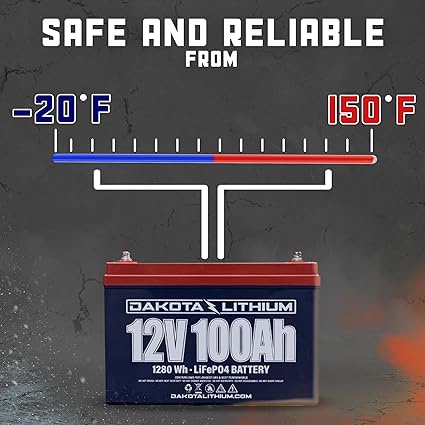Lithium-ion batteries have revolutionized the world of portable power, offering high energy density, lightweight construction, and long cycle life compared to traditional lead-acid batteries. In recent years, they have become increasingly popular in motorcycles due to their superior performance and durability. However, concerns arise regarding whether these batteries can be damaged if the motorcycle's electronics are left on unintentionally. In this article, we'll delve into the intricacies of lithium motorcycle batteries, particularly lifepo4 battery, and explore how they fare in such situations.
Understanding Lithium Motorcycle Batteries
Lithium motorcycle battery comes in various chemistries, with lithium iron phosphate (LiFePO4) being one of the most common types. These batteries offer several advantages over traditional lead-acid batteries, including:
Lightweight: Lithium batteries are significantly lighter than lead-acid batteries, making them ideal for motorcycles where every pound counts.
Higher Energy Density: Lithium batteries pack more energy into a smaller space, providing ample power for starting the engine and running electrical accessories.
Longer Cycle Life: Lithium batteries can withstand a greater number of charge-discharge cycles compared to lead-acid batteries, resulting in a longer service life.
Faster Recharge: Lithium batteries typically recharge faster than lead-acid batteries, allowing riders to get back on the road sooner.
Among the manufacturers of lithium motorcycle batteries, Dakota Lithium has gained recognition for its high-quality products designed specifically for the demanding conditions of motorcycling.
Potential Risks of Leaving Electronics On
Leaving the motorcycle's electronics on when the engine is not running can lead to a gradual discharge of the battery. This is especially concerning for lithium batteries due to their lower tolerance for deep discharge compared to lead-acid batteries. However, the extent of the damage depends on various factors, including the battery's capacity, the duration of discharge, and the ambient temperature.
Over-Discharge: All types of batteries, including lithium-ion batteries, can be damaged if discharged beyond a certain threshold. Deep discharge can cause irreversible chemical reactions within the battery cells, leading to capacity loss and reduced performance over time.
Voltage Drop: As the battery discharges, its voltage drops, which can affect the performance of the motorcycle's electrical system. In extreme cases, the voltage may drop below the threshold required to start the engine, leaving the rider stranded.
Temperature Sensitivity: Lithium batteries are sensitive to temperature fluctuations, and prolonged exposure to high temperatures can accelerate the degradation process. Leaving the electronics on in hot weather can exacerbate the problem, potentially shortening the battery's lifespan.
Mitigating Risks and Best Practices
While lithium batteries are more resilient than their lead-acid counterparts, it's essential to take precautions to avoid unnecessary damage. Here are some best practices for preserving the health of your lithium battery:
Install a Battery Management System (BMS): Most lithium batteries come equipped with a built-in BMS that monitors the voltage, current, and temperature of each cell. A BMS helps prevent over-discharge and overcharging by disconnecting the battery from the load when necessary.
Use a Battery Tender: If you anticipate leaving your motorcycle unused for an extended period, consider connecting it to a battery tender or maintainer. These devices provide a low-level charge to keep the battery topped up without overcharging it.
Turn Off Electronics When Not in Use: Make it a habit to turn off the motorcycle's electronics, including lights, GPS, and heated grips, when the engine is not running. This reduces the load on the battery and minimizes the risk of over-discharge.
Monitor Battery Voltage: Periodically check the voltage of your lithium battery using a multimeter or a dedicated battery monitor. If the voltage drops below a certain threshold (typically around 12 volts for a 12-volt battery), recharge the battery immediately to prevent damage.
Store the Motorcycle in a Cool, Dry Place: When storing your motorcycle for an extended period, choose a location with moderate temperatures and low humidity. Avoid exposing the battery to extreme heat or cold, as both can affect its performance and longevity.
Conclusion
In conclusion, while lithium motorcycle batteries offer numerous advantages over traditional lead-acid batteries, they require careful handling to maximize their lifespan and performance. Leaving the motorcycle's electronics on for an extended period can potentially damage the battery, especially if it's already depleted or exposed to high temperatures. By following best practices such as using a battery tender, turning off electronics when not in use, and monitoring battery voltage, riders can ensure that their lithium batteries remain in peak condition for years to come. Dakota Lithium batteries, known for their durability and reliability, are an excellent choice for motorcyclists seeking long-lasting power solutions for their rides.


No comments yet